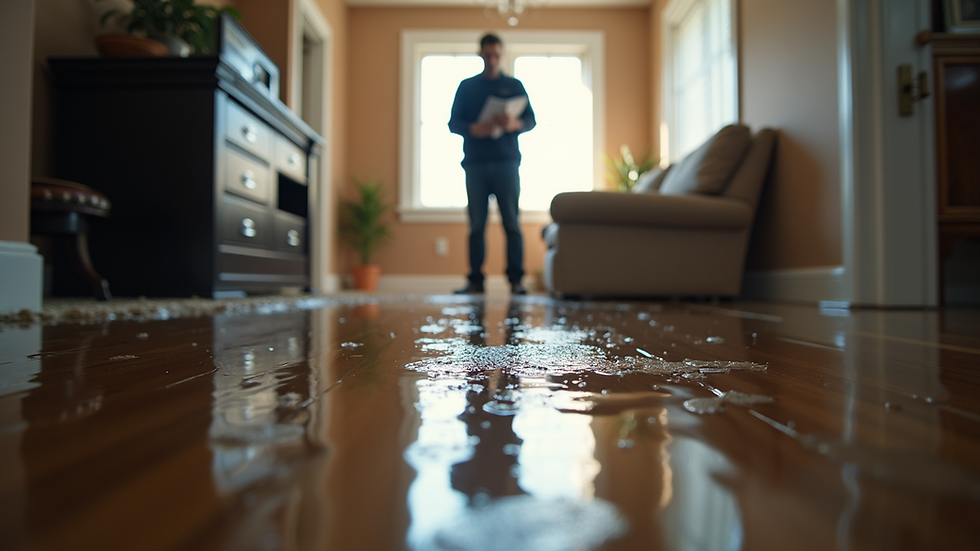What to Do After a Flood: A Step-by-Step Guide
- melissa0748
- Sep 5
- 3 min read
Flood damage can turn life upside down in an instant, leaving homes and businesses in chaos. Beyond the emotional toll, there’s the stress of financial loss and the daunting task of putting everything back together. That’s where having the right flood insurance, and the right support, makes all the difference.
At 1st Direct Insurance, we know floods can feel overwhelming, but you don’t have to face the recovery process alone. We’re here to walk you through each step of filing your claim and getting back on your feet as smoothly as possible.
Step One: Safety Comes First
Before thinking about claims or repairs, make sure it’s safe to re-enter your property. Floodwaters can contain harmful contaminants, and damaged structures may be unstable.
Once you’re confident it’s safe:
Document everything: Take plenty of photos and videos of damaged areas, from furniture to appliances to the building itself.
Make a list: Note the details of damaged or lost items (brand, model, age, and estimated value).
Prevent further damage: If it’s safe to do so, cover broken windows, tarp roofs, or move items to drier areas.
This information will be vital when it’s time to file your claim.

Step Two: Start the Flood Insurance Claim Process
Filing a claim may seem like a big task, but understanding the process makes it much easier. Here’s what to do:
Contact your insurance company right away: Notify them of the flood damage as soon as possible. Quick reporting is key, since most policies require prompt notice.
Review your policy: Take time to understand your coverage, including limits, deductibles, and exclusions.
Schedule the adjuster’s visit: Your insurer will send an adjuster to inspect and confirm the damage.
Submit your documentation: Share the photos, videos, and inventory lists you’ve prepared.
Save receipts: Keep proof of repairs and other flood-related expenses, as some may be reimbursable.
Every insurer has its own process, but the essentials are the same: act quickly, stay organized, and keep detailed records.
And if you’re a 1st Direct Insurance customer, our team will help guide you through these steps to make the process as smooth as possible.

Step Three: Make Sure Nothing Gets Missed
The best way to protect your claim is to stay organized and thorough. We recommend:
Keeping a flood journal with dates, names, and notes from all insurance conversations.
Getting repair estimates from licensed contractors before committing to major work.
Waiting for your adjuster’s approval before starting big repairs, to avoid any disputes later.
Reviewing your policy limits so you’re clear on what’s covered.
Our team is here to guide you through each of these steps, ensuring your claim is as strong and complete as possible.
Step Four: Protect Your Home for the Future
After your claim is filed, it’s time to think about long-term recovery and prevention. A few key steps include:
Drying out quickly with fans and dehumidifiers to reduce the risk of mold.
Looking into disaster assistance programs that may help cover costs not included in your insurance.
Planning ahead with flood-resistant upgrades like sump pumps, barriers, or landscaping improvements.
Moving Forward Together
Recovering from a flood takes time, patience, and the right support. At 1st Direct Insurance, our mission is to make sure you never have to navigate it alone. From the first phone call to the final repair, our experienced team is by your side, helping you protect what matters most.
Flood damage is never easy but with preparation, organization, and a trusted partner in your corner, you can rebuild with confidence.
If you ever face flood damage, remember: 1st Direct Insurance is here to guide you through the process, answer your questions, and make sure you have the coverage you need today and for the future.




Comments